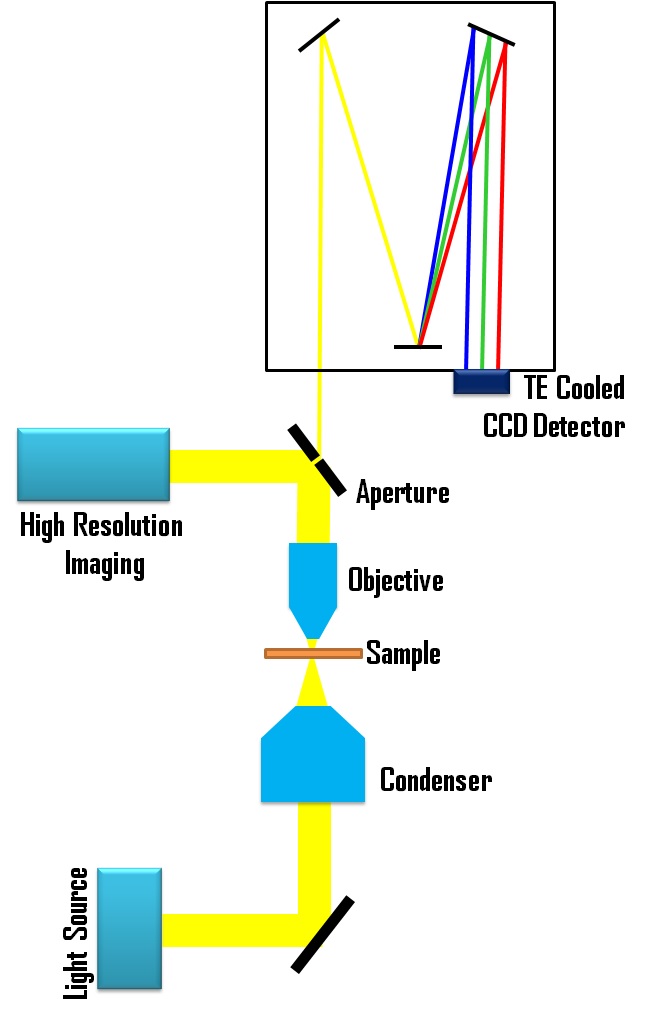Microspectrophotometer Operation
The UV-visible-NIR microspectrophotometer is expertly designed to measure the spectra of microscopic areas or tiny regions on larger samples. These advanced instruments can be configured to assess transmittance, absorbance, reflectance, polarization, and fluorescence in sample areas smaller than a square micron. Experience unparalleled precision and versatility with a microspectrophotometer that reveals intricate details of your samples at the microscale level.
How a Microspectrophotometer operates
The microscope spectrometer and microspectrometer function as follows: a lamp on the microscope emits white light, which is then focused onto the sample. Depending on the sample's chromophore's chemical structure and environment, it absorbs certain wavelengths of light more effectively than others. The remaining light, not absorbed by the sample, is collected by the microspectrophotometer objective and directed onto the entrance aperture of the spectrophotometer. This aperture, being mirrored, reflects most of the light into a digital imaging system, allowing you to see the spectrophotometer aperture overlaid on the sample. This makes it easy to align the system and capture spectra. The figure above shows the entrance aperture as a black square; simply move the stage so that the square is over the sample to take measurements.The light that passes through the aperture enters the spectrophotometer, where it is separated into component wavelengths by an optical grating. Each component's intensity is measured by a pixel on a Charge Coupled Device (CCD) detector. The computer stores this data, resulting in an optical spectrum plotted as an XY chart, displaying measured intensity at each wavelength (see figure above).
Different microspectroscopy techniques are achieved through various lighting methods, determined by the sample type. For example, incident or reflectance illumination is used for opaque samples, while transmitted light is used for transparent samples. A microspectrophotometer can measure transmission, absorbance, reflectance, and emission spectra.
The measurement process is straightforward. First, a dark scan measures the system's dark counts. Next, a reference material spectrum is collected, which includes the spectral characteristics of the reference material, light sources, optics, and CCD. Then, the sample spectrum is acquired, and an algorithm calculates the appropriate spectra for the lighting condition (e.g., reflectance spectra for incident illumination). The computer automatically applies the algorithm, and the result is displayed as a spectrum.


